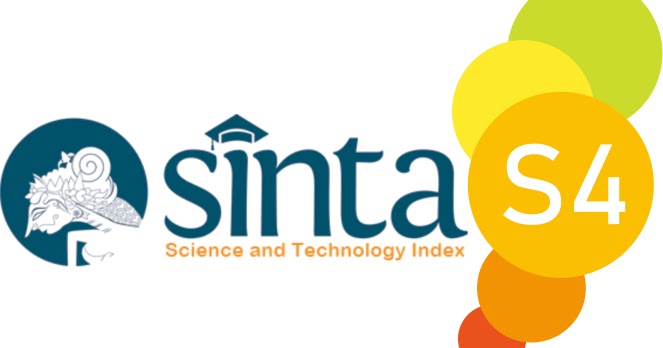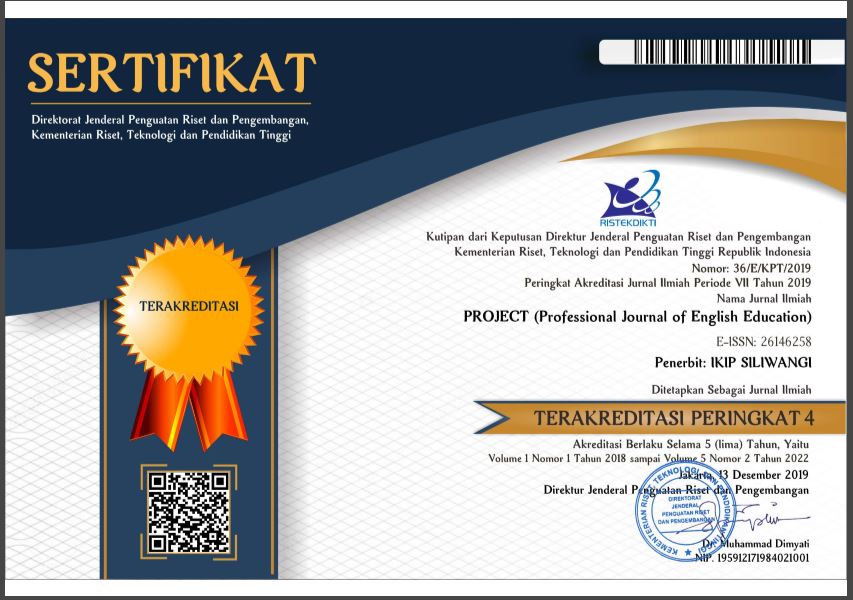AN ANALYSIS OF DEIXIS ON TEDX TALKS OF “STUDY SMARTER NOT HARDER” BY KIKI FAN
Abstrak
The purpose of the research is to assess the types of deixis and the prevailing deixis in the YouTube video of TEDx Talk. This article focuses on the researcher's explanation of the types of deixis and the primary deixis employed in the speech. This study is structured based on George Yule's hypothesis. According to Yule's theory, deixis may be categorized into three parts: person deixis, spatial deixis, and temporal deixis. This study employs a pragmatic approach, using a qualitative research methodology. The data in this study is derived from Kiki Fan's speech on TEDx talks, which has a duration of 8 minutes and 39 seconds. The data was examined using video transcripts and then identifying words that had deixis terms. This study demonstrates that Kiki used 3 types of deixis, including personal deixis, spatial deixis, and temporal deixis. This research demonstrate that the form of deixis that is commonly used is person deixis. The researcher found 39 total of the deixis in the video. There are a 27 words that indicate a person deixis, 6 words that indicate spatial deixis, and 6 words that indicate temporal deixis.
Referensi
Febriza, M. R. (2020). A deixis analysis of Online Newspaper in Jakarta Post. Professional Journal of English education, 3(6), 689-696.
Grossoehme, D. H. (2014). Overview of qualitative research. Journal of health care chaplaincy, 20(3), 109-122.
Hromadová, B. V. (2020). Analysis of the communication of TEDx speakers.
Jaya, H. P., Petrus, I., & Kurniawan, D. (2021). Listening comprehension performance and problems: A survey on undergraduate students majoring in English. Indonesian Research Journal in Education| IRJE|, 5(2), 375-386.
Khalili, E. (2017). Deixis analysis in a tale of two cities written by charles dickens. International Academic Journal of Social Sciences, 4(3), 58-65.
Lestari, R. (2017). Pengunaan Youtube Sebagai Media Pembelajaran Bahasa Inggris. Prosiding Seminar Nasional Pendidikan Berkemajuan dan Menggembirakan (The Progressive & Fun Education Seminar) ke-2.
Rasman, R. (2021). Penggunaan Youtube Sebagai Media Pembelajaran Bahasa Inggris Pada Masa Pandemi Covid 19. EDUTECH: Jurnal Inovasi Pendidikan Berbantuan Teknologi, 1(2), 118-126.
Rizqi, M., & Sabat, Y. (2022). A Deixis Analysis in Joko Widodo’s Statement on Indonesia’s G20 Presidency. Journal of English Language and Culture, 13(1).
Sailun, B., & Idayani, A. (2018). The Effect of TED Talks Video Towards Students’speaking Ability at English Study Program of FKIP UIR:(Pengaruh Video TED TALKS Terhadap Kemampuan Berbicara Mahasiswa Pendidikan Bahasa Inggris FKIP UIR). Perspektif Pendidikan dan Keguruan, 9(1), 65-74
Sari, D. P. S., & Hamidah, N. (2023). Barack Obama’s Victory Speeches Through Illocutionary Act. English Community Journal, 6(2), 116-122.
Sari, S. P. T. (2015). The use of videos to improve the students’ speaking skills at class VII B of SMPN 2 Patuk in the academic year of 2014/2015. Yogyakarta State University. Yogya.
Setiakawanti, R. N., & Susanti, E. (2018). Analysis pragmatic study on deixis in the articles Jakarta Sport. PROJECT (Professional Journal of English Education), 1(6), 757-762.
Sundari, W. (2021). An analysis of deixis in the novel of ‘Ketika Cinta Bertasbih 1’by Habiburrahman El-Shirazy. Language Circle: Journal of Language and Literature, 16(1), 187-192.
Yule, G. (1996). Pragmatics. Oxford university press.
Yule, G. (2020). The Study of Language (7th ed.). Cambridge University Press.





